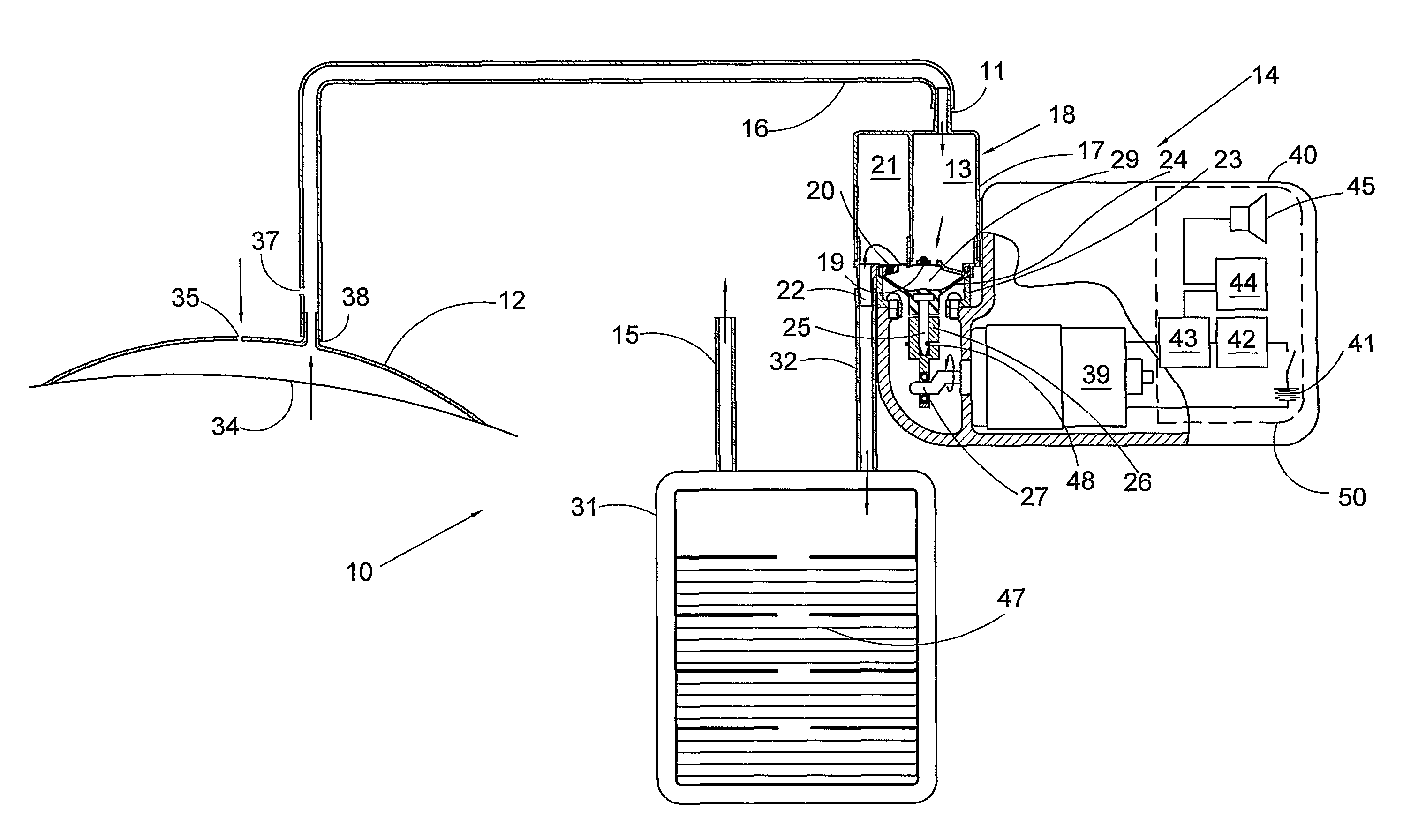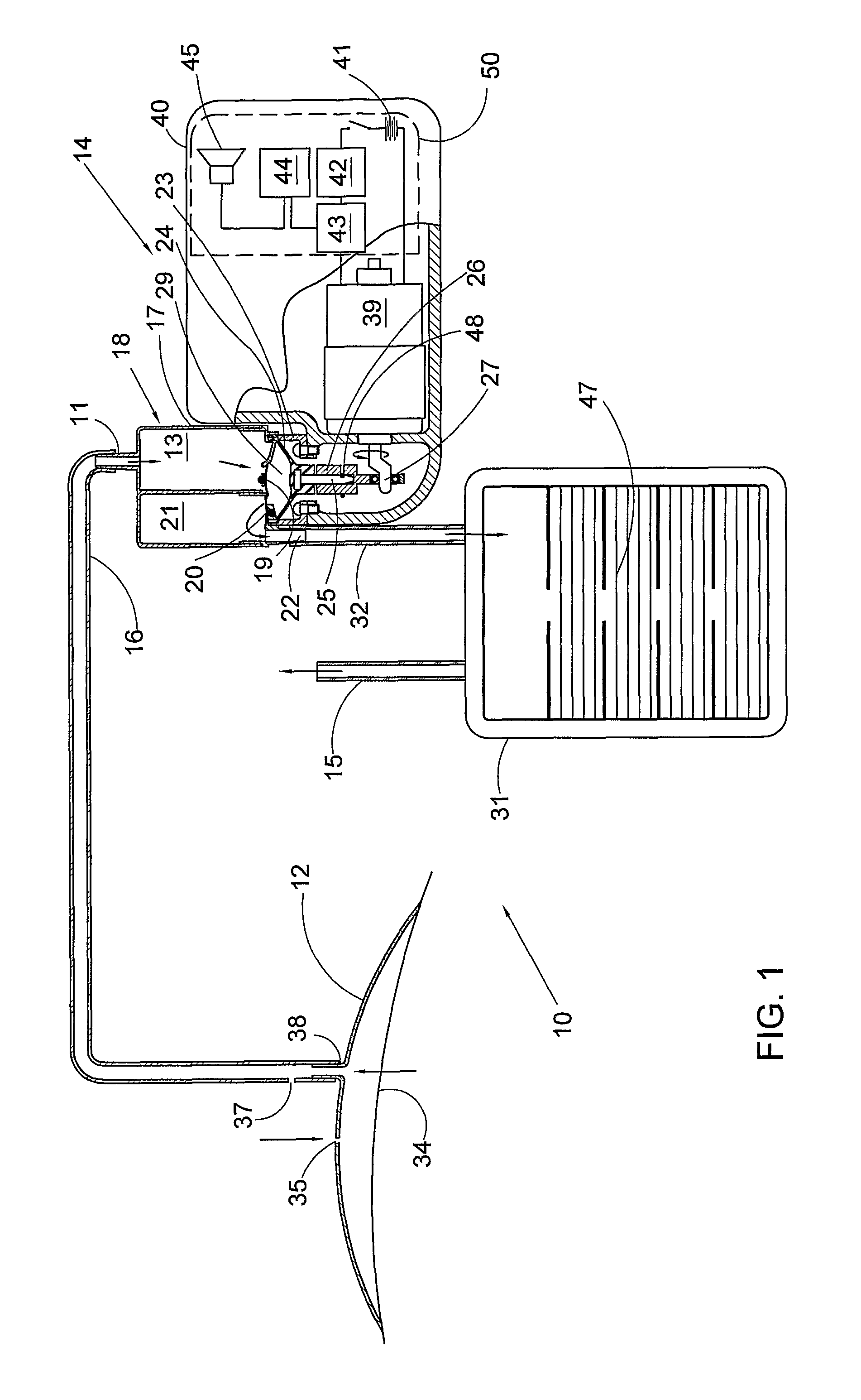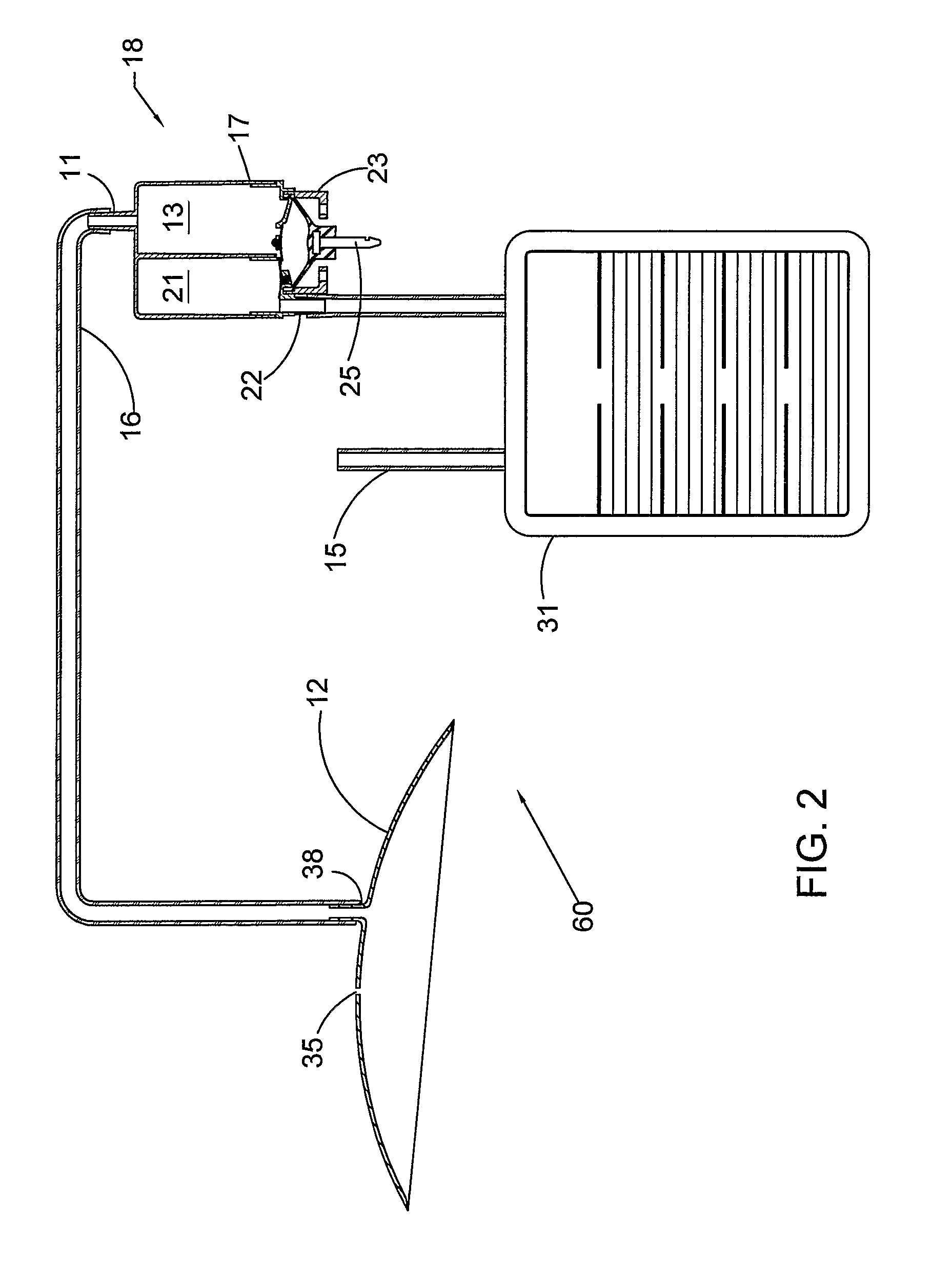Wound closure and drainage system
a drainage system and wound technology, applied in the direction of machines/engines, liquid fuel engines, positive displacement liquid engines, etc., can solve the problems of unreliability, complex and expensive methods of isolating the pump, and bulky and inconvenient burden for patients, etc., to achieve convenient use
- Summary
- Abstract
- Description
- Claims
- Application Information
AI Technical Summary
Benefits of technology
Problems solved by technology
Method used
Image
Examples
Embodiment Construction
[0040]The present invention provides a system and a method of treating and healing of a body wound, by applying a negative pressure to the wound, over an area sufficient to promote migration of epithelial and subcutaneous tissue toward the wound.
[0041]It is appreciated that the detailed description that follows is intended only to illustrate certain preferred embodiments of the present invention. It is in no way intended to limit the scope of the invention, as set out in the claims.
[0042]With reference to FIG. 1, in accordance with the present invention, a vacuum system 10 for draining an open wound from liquids exuded therefrom comprises a wound enclosure 12, a vacuum pump 14, and waste collection bag 31. The wound enclosure 12 is connected by a suction tube 16 to an inlet 11 of the vacuum pump. The waste collection bag 31 is connected to an outlet 22 of the vacuum pump. Thereby, when the vacuum pump 14 is operated, the drained liquids flow through the pump into the waste bag 31.
[0...
PUM
 Login to View More
Login to View More Abstract
Description
Claims
Application Information
 Login to View More
Login to View More - R&D
- Intellectual Property
- Life Sciences
- Materials
- Tech Scout
- Unparalleled Data Quality
- Higher Quality Content
- 60% Fewer Hallucinations
Browse by: Latest US Patents, China's latest patents, Technical Efficacy Thesaurus, Application Domain, Technology Topic, Popular Technical Reports.
© 2025 PatSnap. All rights reserved.Legal|Privacy policy|Modern Slavery Act Transparency Statement|Sitemap|About US| Contact US: help@patsnap.com



